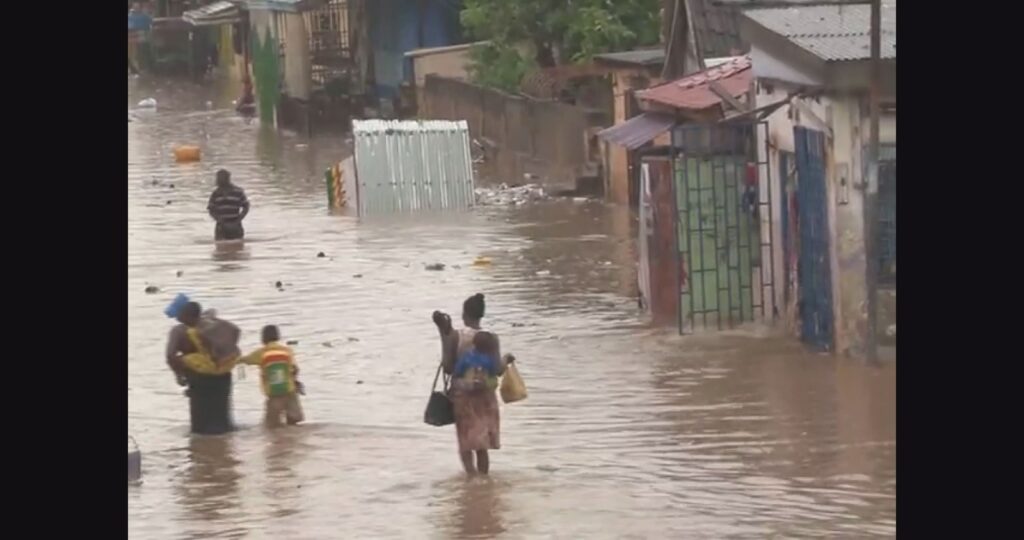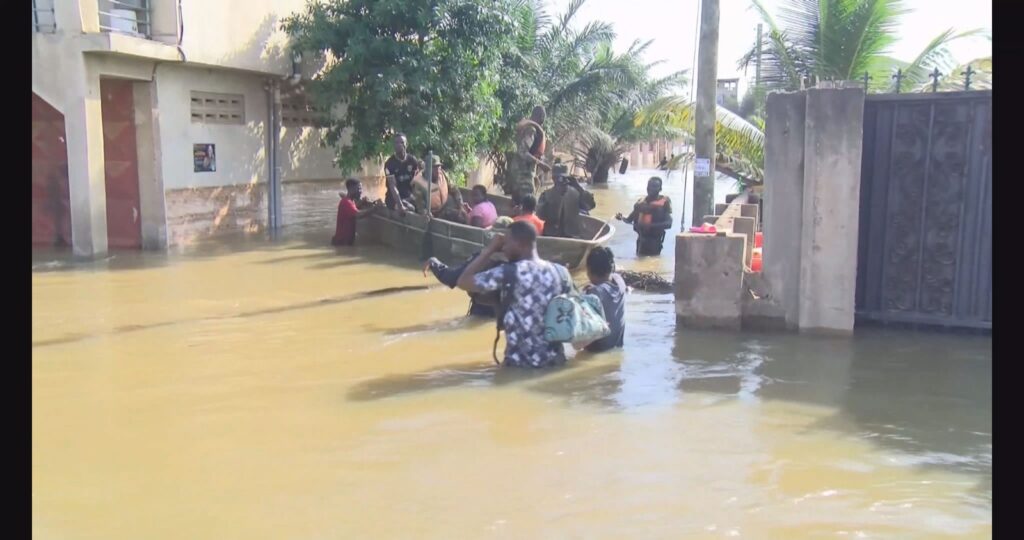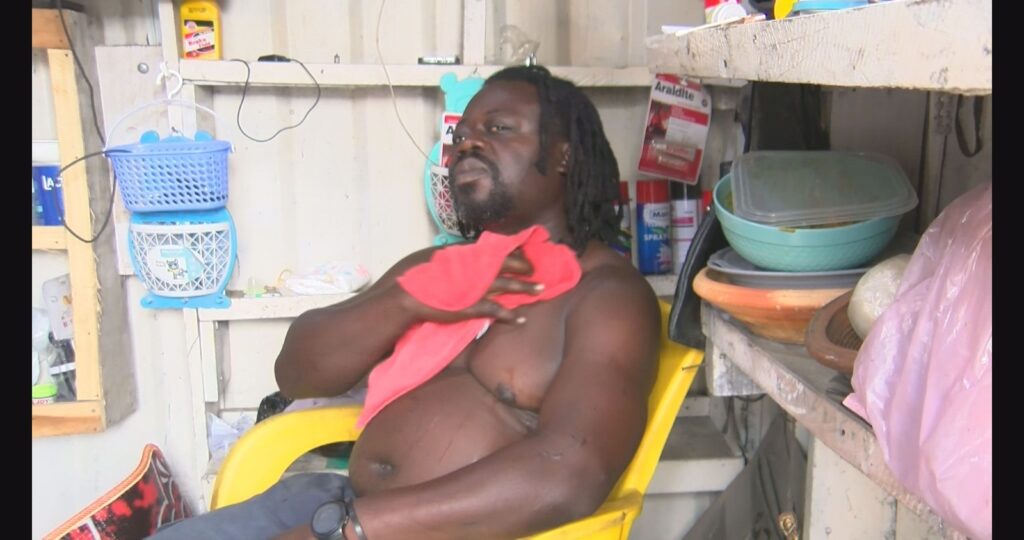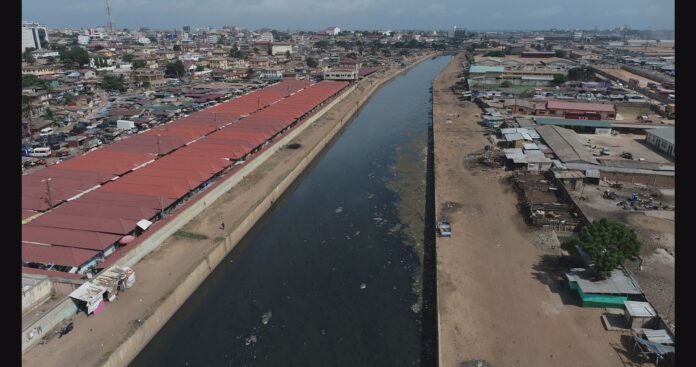As Ghana steps up its fight against climate change, the Greater Accra Resilient and Integrated Development Project (GARID) is transforming parts of the capital, upgrading drains, cleaning waterways, and improving living conditions in flood-prone areas like Nima, Alajo, and Akweteman.
However, in Odawna, just a few kilometers away, residents say they have been largely overlooked. Here, recurrent floods and severe heatwaves continue to disrupt daily life, highlighting the growing inequality in Ghana’s climate resilience efforts.
GARID Project Brings Relief, But Not Everywhere
In neighborhoods such as Nima and Alajo, GARID’s impact is evident. New concrete drains, raised footpaths, and improved waste management systems have helped reduce waterlogging and create safer, more livable communities.

The project, backed by the World Bank and Ghana’s Ministry of Works and Housing, seeks to shield vulnerable communities from urban flooding and climate-related shocks.
Yet in Odawna, the disparity is striking. Recent drone footage shows submerged homes, damaged clinics, and drains clogged with waste. This year alone, torrential rains displaced over 3,000 residents as floodwaters overwhelmed the community.
“It’s Not Just Water—It’s a Killer”
For many in Odawna, every downpour brings fear.
“The roads were flooded. I couldn’t move. I had to watch my child suffer until the water went down,” lamented Mary Klottey, a resident.
Another local recounted the deadly impact of the floods: “Two people drowned in the gutter just here. This is dangerous. It’s not just water — it’s a killer.”
Beyond the immediate threat to life, the floods destroy property and cut off access to healthcare and schools, deepening poverty and vulnerability in the community.

After the Floods Comes the Heat
When the rains subside, another climate threat takes hold: extreme urban heat.
“It’s like an oven inside. I can’t sleep. My skin itches, and I feel dizzy most nights,” said Seth Kusi, a glass repairer living in a metal kiosk.
With minimal ventilation and almost no green cover, Odawna’s makeshift homes trap heat long after sunset. Experts warn that this “urban heat island effect” is heightening health risks for residents.
A study by Dr. Ebenezer Amankwaa of the University of Ghana’s Geography Department found that nighttime temperatures in Odawna can be up to 6°C higher than the national average, exacerbating dehydration and heat-related illnesses.

“When floodwaters damage clinics and rising heat shuts down equipment, healthcare delivery collapses. Climate-proofing these areas is now essential,” Dr. Amankwah noted.
Healthcare on the Brink
Repeated flooding has severely affected local health facilities.
Footage from Odawna shows clinics submerged, nurses drying soaked medical equipment, and patients waiting outside in sweltering heat.
Dr. Amankwaa warns that without targeted investment, healthcare in informal settlements will continue to deteriorate.
“We need to climate-proof these clinics — install cooling systems, raise foundations, and protect power supply,” he emphasized.
Community Efforts: Fighting Back with Limited Means
Despite the challenges, residents are finding small ways to adapt. Some have raised their beds, manually cleared drains, or formed community clean-up groups.
However, these efforts fall short of addressing the scale of the problem.
“We’ve increased public education and advised people to seek safer areas. Odawna is part of the government’s long-term restoration plan, including dredging the Odaw River,” said Dennis Nartey, NADMO Regional Director.
Government Response and the Way Forward
Officials from the Environmental Protection Agency (EPA) and Ministry of Works and Housing say progress is being made.
“Tree planting and reducing glass in homes help lower urban heat. Communities must be part of the change,” Prof. Nana Ama Klutse, CEO of the EPA, explained.
“We’ve begun dredging the Odaw River to improve water flow and reduce flooding. But the work must continue,” added Richard Kofi Amekor, Head of the Drainage Department, MWH.
Experts and policymakers agree that expanding GARID’s interventions to cover Odawna and other vulnerable settlements could save lives and ensure no community is left behind in Ghana’s climate resilience efforts.
A Hopeful Outlook Amid Rising Risks
Children planting trees, youth leading clean-ups, and women rebuilding small shops show that Odawna’s story is not just about hardship, but also resilience and determination.
“The GARID project is proof that change is possible. We just need it to reach everyone,” said a resident volunteer.
As Accra faces intensifying climate challenges—from floods to heatwaves—experts stress that inclusive, community-driven solutions will determine whether urban resilience becomes a reality or remains a promise on paper.
Source: Prince Owusu Asiedu
This story is in partnership with CDKN and the University of Ghana C3SS with funding from CLARE R4I Opportunities Fund.


